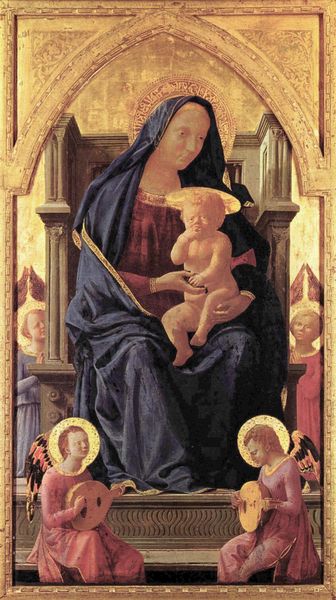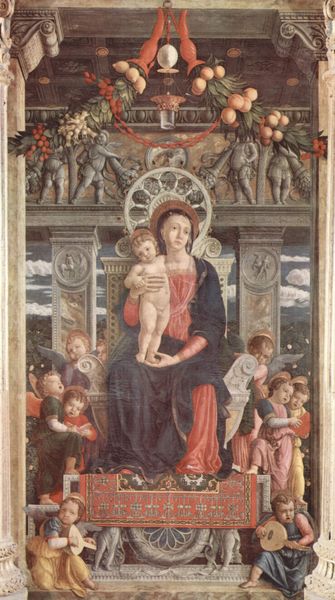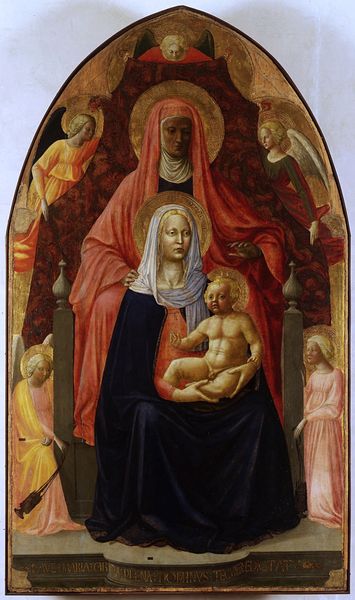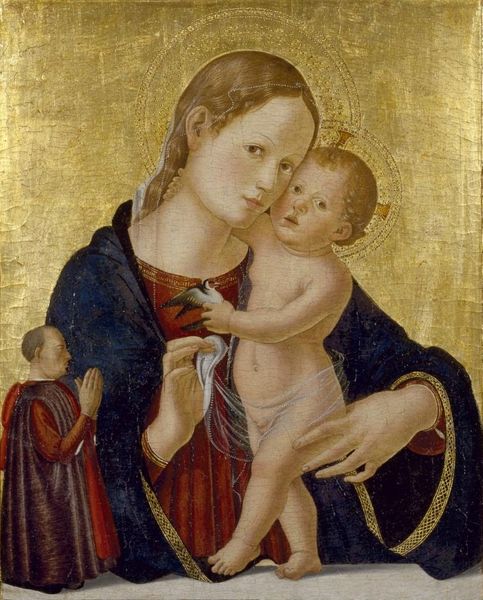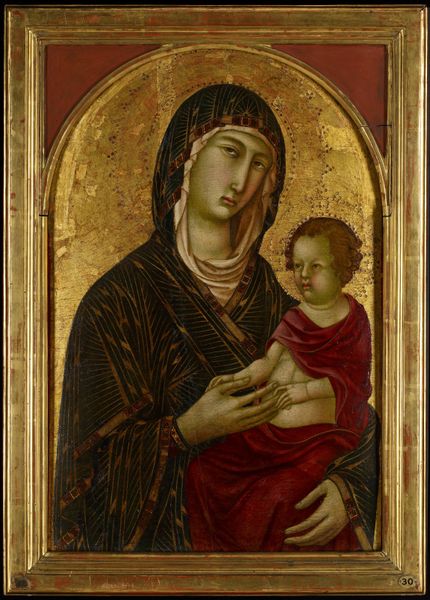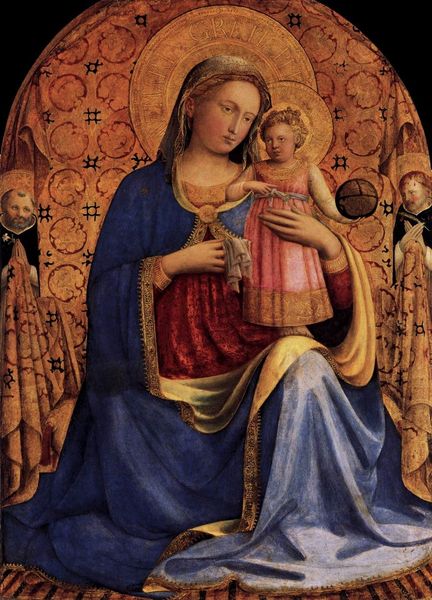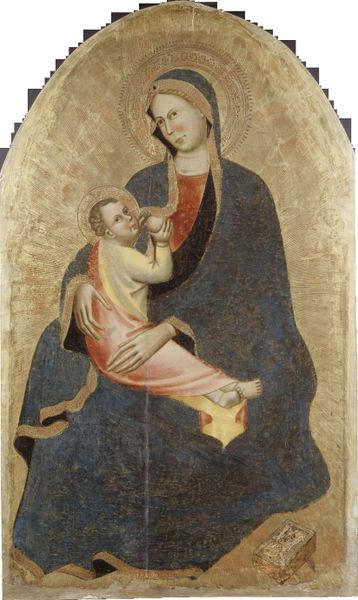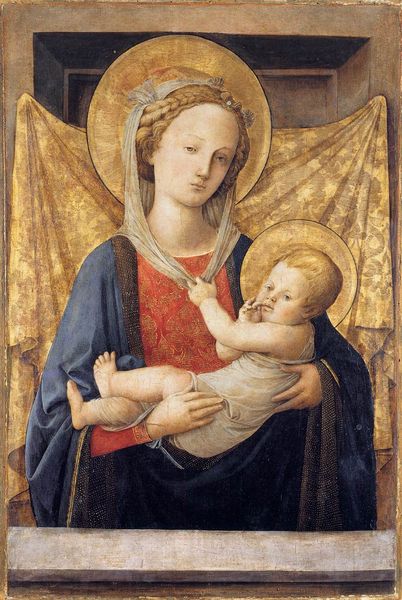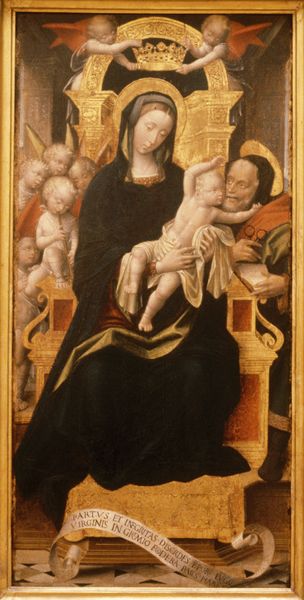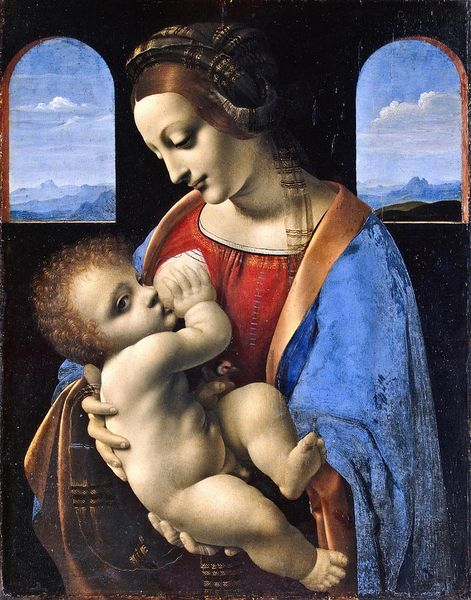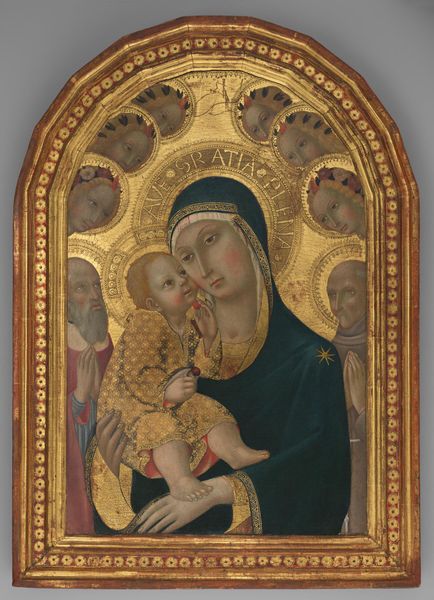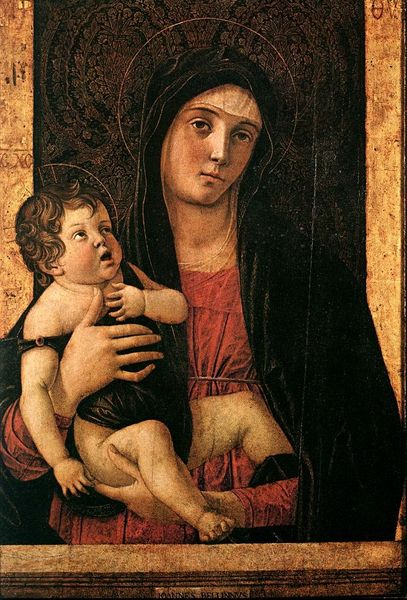
tempera, painting
#
portrait
#
tempera
#
painting
#
figuration
#
child
#
christianity
#
italian-renaissance
#
early-renaissance
#
christ
Dimensions: 65 x 124 cm
Copyright: Public domain
Sandro Botticelli painted the Madonna of the Rosegarden in Florence using tempera on wood, around 1469. The smoothness of the paint, achieved by patiently layering pigment and egg yolk, creates a subtle glow that lends the scene a serene quality. Consider the underdrawing, or preparatory sketch, which would have been crucial in mapping out the composition. This meticulous process, demanding skilled craftsmanship, reflects the values of Renaissance workshops, where the boundaries between art and craft were fluid. The artist applied glazes and fine brushwork to build up color and texture, resulting in the realistic depiction of skin and drapery. The gold-leaf details would have been laid on with gesso, a plaster-like ground, and burnished to a high sheen. Paintings like this were made with patronage in mind; the commissioner had power over artistic choices. Botticelli’s masterful rendering embodies not only religious sentiment, but also the cultural aspirations of its patrons. To truly appreciate this painting is to recognize the artistry and labor involved in its creation.
Comments
No comments
Be the first to comment and join the conversation on the ultimate creative platform.
